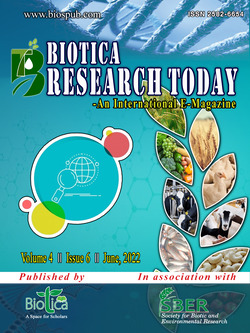
Hydroponics: Power of Water to Grow Fodder for Livestock Production
R. Sathya Priya*
Dept. of Agronomy, Directorate of Crop Management, Tamil Nadu Agricultural University, Coimbatore, Tamil Nadu (641 003), India
N. Jagathjothi
Dept. of Agronomy, Directorate of Crop Management, Tamil Nadu Agricultural University, Coimbatore, Tamil Nadu (641 003), India
P. Murali Arthanari
Dept. of Agronomy, Directorate of Crop Management, Tamil Nadu Agricultural University, Coimbatore, Tamil Nadu (641 003), India
DOI: NIL
Keywords: Green fodder, High conception, Save water, Weight gain
Abstract
Green fodder is the natural diet for livestock. Its production to meet the current demand has become a greatest challenge among livestock farmers. As the gap between the demand and supply of the green fodder for livestock becoming unconquerable, researchers and farmers are in search for an alternative fodder or fodder production method, that would restore fodder and livestock production. Hydroponics is the state of the art technology that has revolutionised the green fodder production in the 21st century. Hydroponics is a method of growing green fodder without soil in an environmentally controlled houses or machines. Many of the livestock farmers are switching to hydroponic fodder production from conventional production methods, as the fodder produced by this method are highly nutritious, provide sustainable fodder production round the year and conserve water.
Downloads
not found
Reference
IGFRI, 2013. Vision 2030. Indian Grassland and Fodder research Institute, Jhansi, p. 48.
Naik, P.K., Swain, B.K., Singh, N.P., 2015. Production and utilisation of hydroponics fodder. Indian Journal of Animal Nutrition 32(1), 1-9.
Ramteke, R., Doneria, R., Gendley, M.K., 2019. Hydroponic Techniques for Fodder Production. Acta Scientific Nutritional Health 3(5), 127-132.
Singh, S.K., Patil, A.K., Kautkar, S., Dwivedi, P.N., Singh, A.K., 2021. Cooling and qualitative study of evaporative cool hydroponically grown maize crop. Current Journal of Applied Science and Technology 40(22), 1-7.
